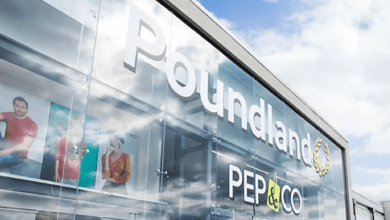Why are many big brands going into administration?
With The Body Shop recently announcing it has fallen into administration, the future of the UK high street keeps on being unpredictable

2023 has been a tough year for the United Kingdom’s economy — and economic challenges have widely been echoed particularly in the retail sector, with profile retail giants such as Wilko going bust after efforts to rescue the company failed.
In the footsteps of last year’s events, it appears that 2024 is continuing along a similar path, with cosmetics and skincare company The Body Shop recently announcing its administration just last week. Just three months after the company was bought by Aurelius Group in a £207m deal, the 100% vegan shop FRP confirmed on Tuesday (13 February) that it had appointed Joint Administrators due to the retailer facing “an extended period of financial challenges under past owners”.
Given the numerous retailers falling victim to this fate, it’s worthwhile to explore the implications of administration for a company.
What does falling into administration mean?
In the landscape of commerce, the term ‘administration’ often carries weighty implications, especially for retailers. Essentially, administration refers to a form of insolvency procedure designed to rescue or restructure a financially troubled company.
According to the Government, when a company goes into administration, “they have entered a legal process with the aim of achieving one of the statutory objectives” which usually means rescuing a viable business that is insolvent due to financial problems.
Being insolvent for a business is therefore a situation where a company is facing financial difficulties and is not able to repay its creditors in time. There usually are two types of insolvencies — a cashflow insolvency, which happens when a company is unable to pay its debts when they are due, and a balance sheet insolvency, when what the company owes is greater than what it owns in the long-term.
The ramifications of being in a state of insolvency extend far beyond the company itself, also impacting stakeholders, operations, and the broader market.
In simpler words, insolvency is the precursor state of a company before it enters administration.
Initiated either by the company’s directors, creditors, or the court, administration aims to preserve the business as a going concern while maximising returns for creditors.
Upon appointment, an administrator assumes control of the company, temporarily displacing existing management to execute a strategic rescue plan or organise an orderly winding-up process.
Implications for retailers
For retailers, entering administration can signal distress, triggering a ripple effect across various dimensions of the business.
Firstly, the announcement “spoils” consumer confidence, potentially precipitating a further decline in sales as customers prefer other alternatives. The misconception that entering administration necessarily equals going out of business forever could also aggravate the situation.
Moreover, suppliers may tighten credit terms or halt deliveries, exacerbating inventory shortages and operational disruptions.
In addition, from an internal standpoint, administration precipitates a period of uncertainty for employees, with layoffs, wage reductions, or restructuring initiatives often accompanying the process.
Types of administrations
While administration represents a struggling moment for companies, nuances exist within the process. The two primary forms of administration include the pre-pack administration and the trading administration.
The first type involves negotiating the sale of a company’s assets before formally entering administration. By securing a buyer in advance, pre-pack administration maximises asset value and facilitates a swift exit from insolvency. When the administration involves a sale of all or part of the company’s business, the proceeds will then be distributed to creditors in order of priority.
A trading administration, in contrast, prioritises the ongoing operations of the business during the administration period. The appointed administrator assumes control of day-to-day affairs, striving to stabilise operations and explore potential restructuring options — all while the company continues to trade as normal.
Administrations can last up to 12 months, but usually after the first eight weeks, the appointed administrators will formulate what the best course of action should be. After the administrators’ proposal, creditors are then asked to vote whether to approve or not.
Administration vs liquidation
Another common misconception is the difference between administration and liquidation, with the two terms often used interchangeably although having different meanings.
The primary goal of an administration is to rescue the company as a going concern or to achieve a better outcome for creditors. At the same time, while under administration, a company is protected from legal actions by creditors. If successful, administration can lead to the company’s revival, preserving jobs and business operations.
The outcome of an administration can vary. It may result in a Company Voluntary Arrangement (CVA), where creditors agree to a repayment plan, a sale of the business, or, if rescue efforts fail, the company may proceed to liquidation.
In a sense, a liquidation is the last possible option after a company has become insolvent. Liquidation involves selling off a company’s assets to repay creditors and distributing any remaining funds to shareholders — putting the company’s existence to an end.
It can occur through two main routes: voluntary liquidation, initiated by the company’s directors or shareholders, or compulsory liquidation, typically initiated by creditors through a court order due to insolvency. Once all assets have been sold, creditors are paid according to their priority, and any remaining funds are distributed to shareholders, the company is officially dissolved, and its name is removed from the register of companies.
2024 and beyond
Looking to the year ahead, it’s hard to predict the future of high street retailers, especially considering the industry will continue to be challenged by competitor giants such as Amazon, the loom of a general election around the corner and the recently announced economic recession.
While administrations can feel intimidating to many retailers on the verge of facing financial challenges, it’s important to seek early the advice of an insolvency practitioner in order to navigate the best outcome for a company.











